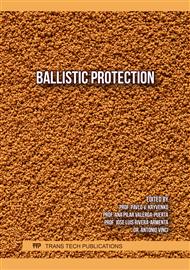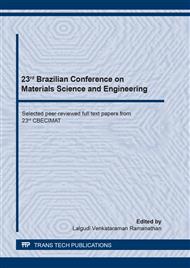p.20
p.26
p.32
p.37
p.43
p.51
p.57
p.62
p.67
Influence of Degradation on the Ballistic Behavior of Aramid Fabric Reinforced Polymeric Armor Composites
Abstract:
Polymeric fibers are used for reinforcement of composites in all kinds of applications, from sport and recreation products to military equipment. Since these fibers have high energy absorption on ballistic impact, the defense industry uses them to manufacture lightweight armor. In many cases, armors are exposed to degradation agents such as heat, humidity, and radiation. The macromolecular changes of polymer fibers exposed to degradation agents can affect the mechanical and ballistic properties of the composite. The present work studies the ballistic performance of aromatic polyamide (aramid) fabric-reinforced composite using two different matrices, degraded by gamma radiation. The results suggest that gamma radiation can change the penetration failure mechanism of the composite in a variety of ways depending on the matrix, compromising its performance.
Info:
Periodical:
Pages:
43-48
Citation:
Online since:
October 2020
Keywords:
Price:
Сopyright:
© 2020 Trans Tech Publications Ltd. All Rights Reserved
Share:
Citation:



